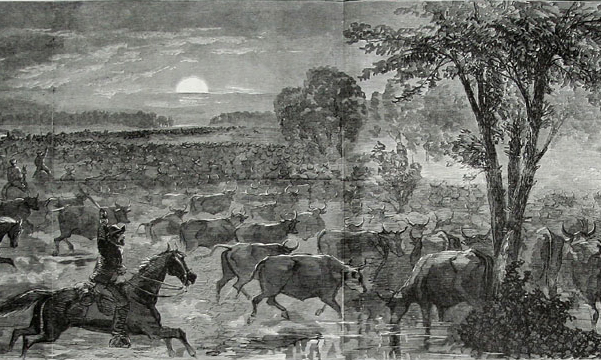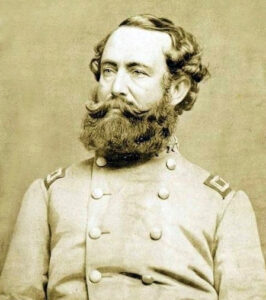COLUMBIA, S.C. – Confederate soldiers were always short of supplies, but in September 1864 things were worse than ever. Besieged in Petersburg, Va., the Army of Northern Virginia was facing starvation. Robert E. Lee saw that somebody had to do something.
That somebody turned out to be South Carolina’s own Maj. Gen. Wade Hampton III, who led his cavalrymen on what turned out to be, arguably, the biggest cattle rustling raid in American history.
At noon on Sept. 20 at the Richland Library main location on Assembly Street in Columbia. Joe Long, curator of education at the South Carolina Confederate Relic Room and Military Museum, will tell the full, riveting story of “The Great Beefsteak Raid.”
The lecture is part of the museum’s regular Noon Debrief program. Those lectures are usually presented at the Relic Room itself, but since the museum is undergoing renovation, the nearby library has generously offered a venue for the program off-site. This will be the third such program at the library since June.
Earlier in the war the star of the Confederate cavalry – who served as the eyes of the army, and provided its most effective way of striking at the Union quickly from a distance – was J.E.B. Stuart. But the legendary Stuart had been killed in May of 1864, and that left Hampton to play his role.
He took over under more difficult conditions than Stuart had faced. He had quite a few challenges beyond the shortage of victuals that afflicted the whole army. In 1964, Southern forces were no longer mobile, moving from one surprising victory after another. Union forces were now led by Ulysses S. Grant, who used the superior Federal assets to push the Confederates into a more-or-less constant defensive position.
There were other problems. Technological progress, for instance. Union cavalrymen were now armed with repeating rifles, giving them an enormous firepower advantage over their Southern counterparts.
Just as bad, it was harder for the South to replace horses. Southern horsemen had supplied their own horses – which was no longer nearly as easy as it had been. Meanwhile, the Yankees’ supply chain for horses remained just as steadily efficient as ever, just as it did for food and other essentials.
And the Northern cavalry had caught up in training.
Lee not only needed food, he needed a distraction in the enemy’s rear, to ease the pressure on Petersburg. Hampton provided both.
Hampton had an intelligence breakthrough. He learned that the Northern cattle supply was poorly guarded. His Iron Scouts – Hampton’s own special forces – had located the herd about five miles behind Grant’s headquarters. The herd, estimated at nearly 3,000 head, wasn’t guarded from one side – the Union was relying on a swollen creek without a bridge to secure the livestock from that direction.
Hampton’s men attacked far behind enemy lines and captured at least 2,000 head of beef while suffering relatively light casualties. It was an amazing coup.
Joe Long notes that you can watch a highly fictionalized account of the raid in a 1966 action film called “Alvarez Kelly.” But if you want to hear what really happened, come hear Joe tell about it at Richland Library on Sept. 20.





Comments are closed.